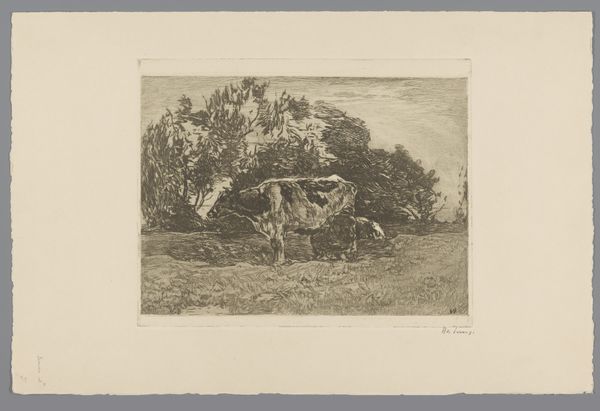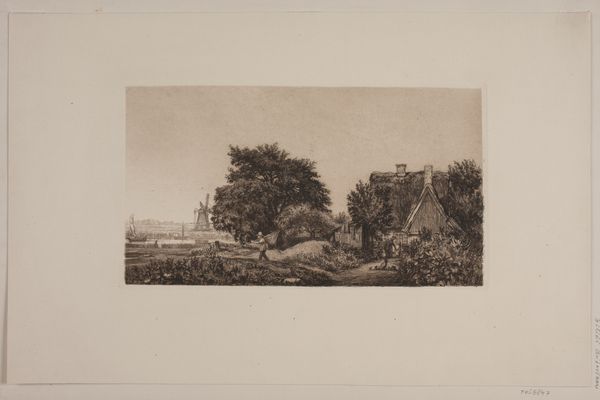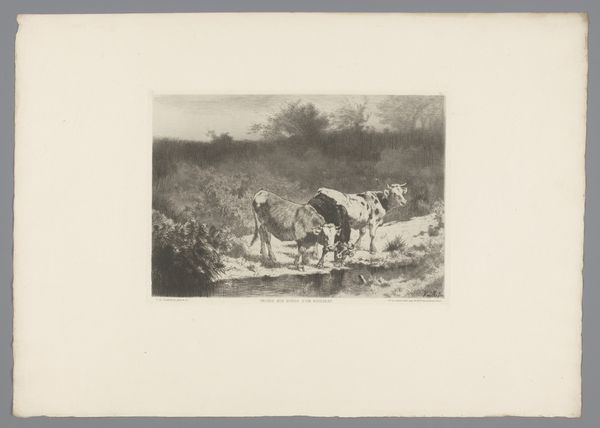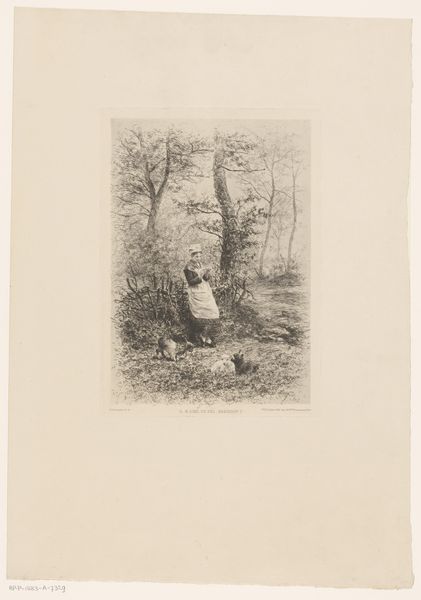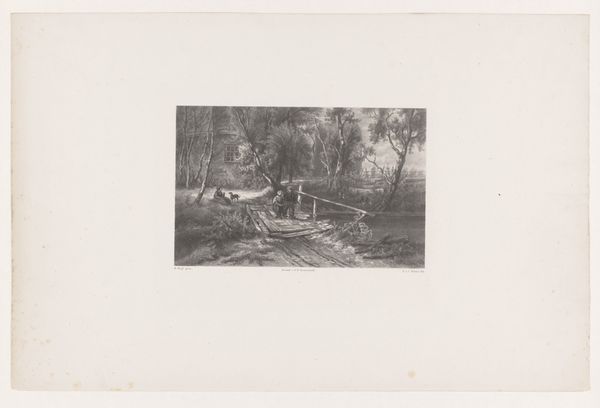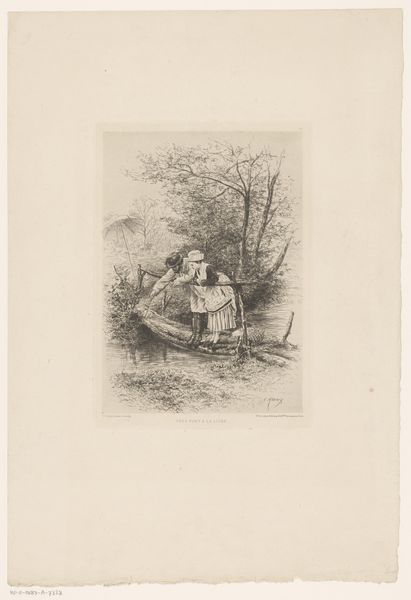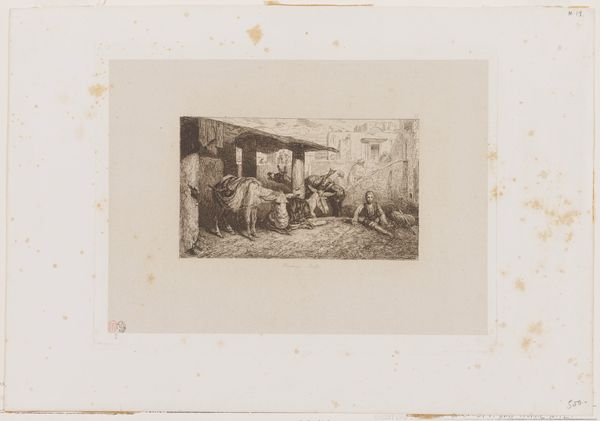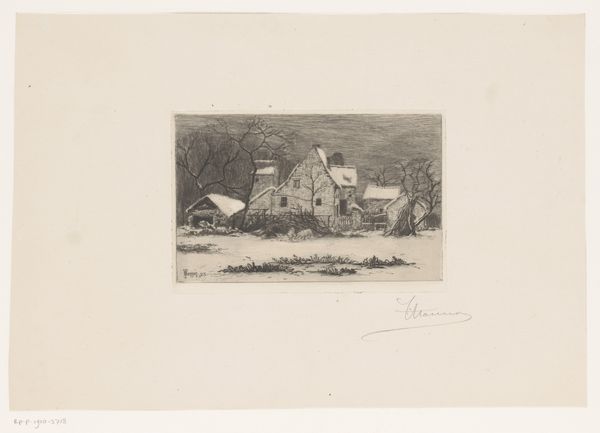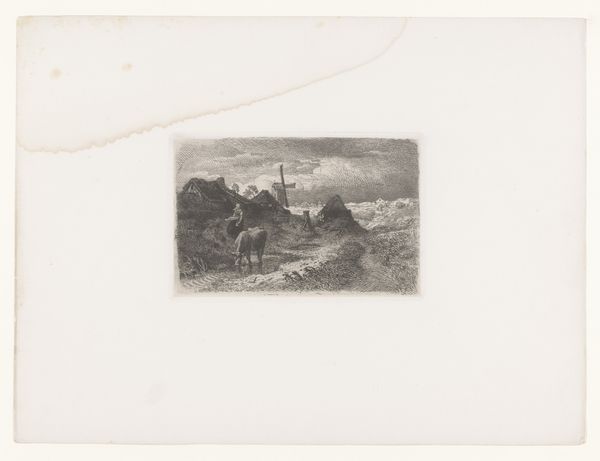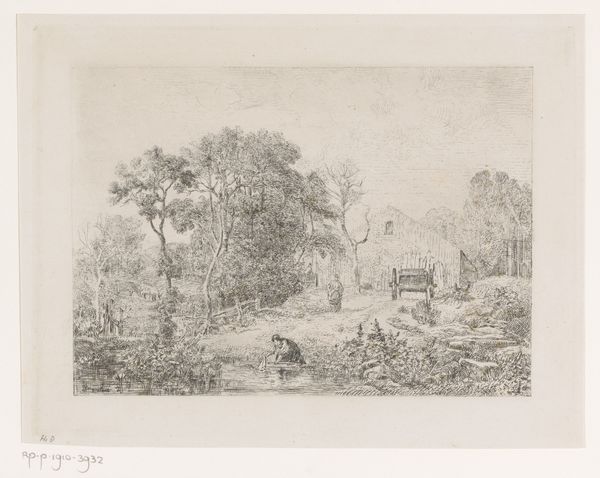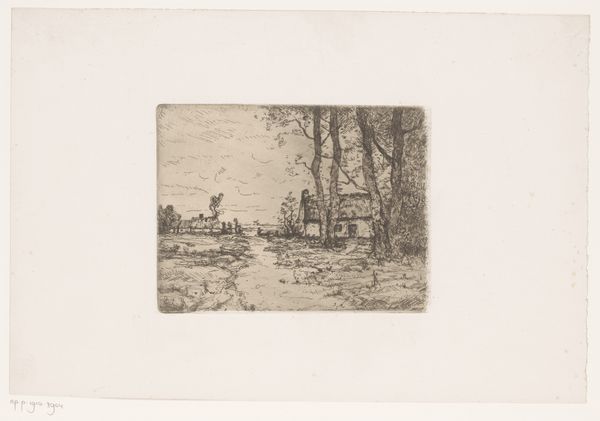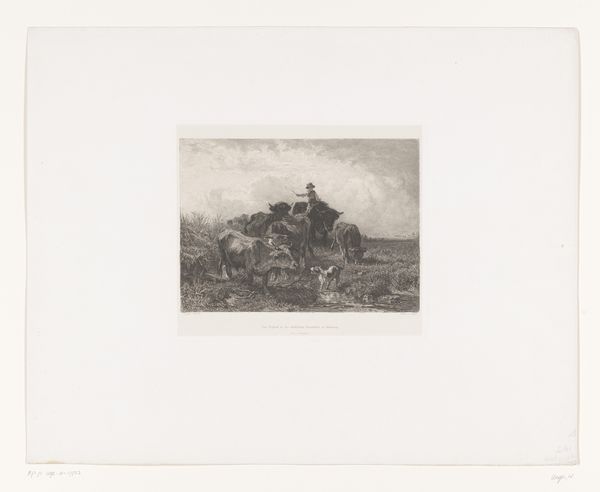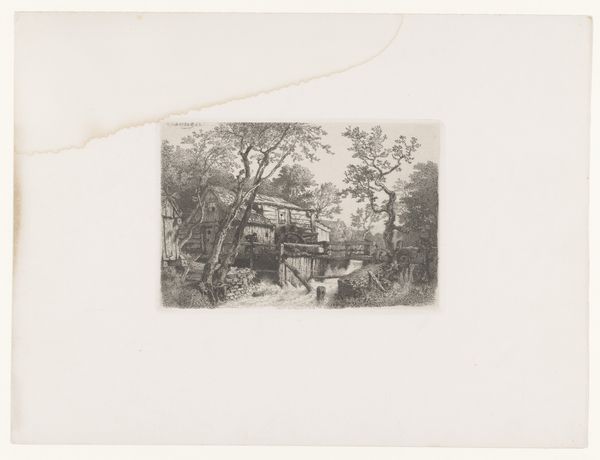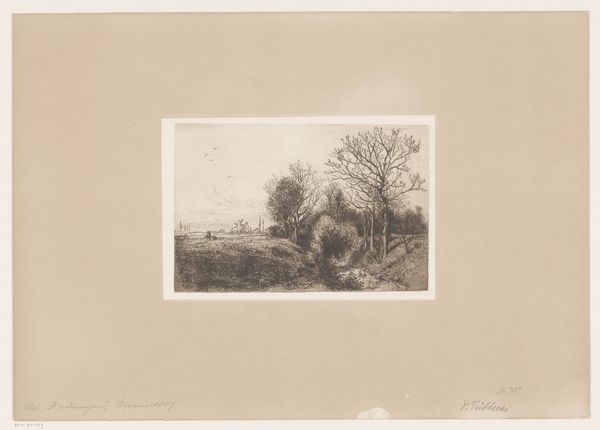
Dimensions: height 198 mm, width 295 mm
Copyright: Rijks Museum: Open Domain
This print by Friedrich Wachenhusen, probably made around the turn of the century, uses the technique of etching to capture a quiet, everyday scene. Etching involves coating a metal plate with a waxy, acid-resistant material, then drawing through this coating to expose the metal. When the plate is immersed in acid, the drawn lines are bitten into the surface. This painstaking process allows for extremely fine detail, which we see here in the rendering of the stone gate and surrounding foliage. It’s a process demanding meticulous skill. The network of fine lines gives the print its texture and tonality. Compared to painting, printmaking is intrinsically linked to reproduction and the wider distribution of imagery – a phenomenon that has only accelerated in the digital age. Next time you look at a print, consider not only the image itself, but the labour and technical mastery required to bring it into being. It's a reminder that even seemingly simple images are often the product of complex and skilled creative processes.
Comments
No comments
Be the first to comment and join the conversation on the ultimate creative platform.
